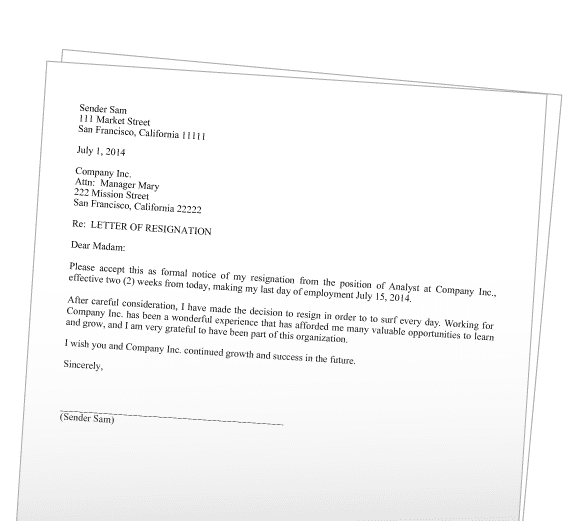Even in today’s digital age, formal letters and emails remain a crucial way to communicate in business settings. These need to showcase a professional demeanor that says you take this job seriously and know how to work hard. Whether you are addressing your employer, business partner, or client the ability to craft a clear, professional, and well-structured letter is essential. Here are some tips to help you write a formal letter that leaves a positive impression.
1, Maintain a Polite and Professional Tone

The most important part of writing a formal letter is the tone and word choice. You have to remember you’re speaking to co-workers, clients, and managers, not your friends. That means using a tone that’s respectful and polite. Your tone sets the stage for how the recipient perceives your message. Avoid overly casual or flowery language as in this setting, people want to get down to business. So just state what you have to say and be done with it. At the same time, use a strong tone because it helps get your message across and makes you appear confident.
2, Formal Letters Provide Relevant Details
When creating formal letters, you always need to have a purpose. People don’t typically have time for chit-chat in the professional environment. So when you have something to say, get to the point. If you are applying for a job, state that within the first sentence, if you have something to report, let the recipient know that, and if you have a problem, raise it right away. This way you do not waste time and your readers already know what is expected of them. When you do explain your purpose, put all the relevant details in one email. You don’t want to string this conversation along for multiple exchanges. So leave nothing out so the reader knows what to do.
3, Use Proper Formatting in Formal Letters
If you are writing a physical letter there are certain things you are expected to put as part of the format. This is to ensure that you will send it to the right place. Here’s how to structure it:
- Sender’s Address: The first thing at the top of the letter should be an address and this will be the first thing the receiver reads. This should either be your or your organization’s address. Underneath there must be space for a date to be written.
- Date: Skip a line after the sender’s address and write the date. Always write out the month to avoid confusion (e.g., September 24, 2024).
- Recipient’s Address: Below the date, include the recipient’s name, title, company, and address.
- Salutation: Address the recipient formally. If you know their name, use “Dear Mr./Ms. [Last Name],” or use “Dear Sir or Madam” if you don’t know the recipient’s name.
4, End With A Clear Sign-Off and Call to Action
When you have said everything you need to say and want to sign off, it’s best to leave the last paragraph of a formal letter as a call to action. This should give your recipient an idea of what the next step should be. This can be arranging a meeting, following up with a topic, or asking for something. This makes clear your intention and lets them know what you want.
But that shouldn’t be how you end the letter. Instead, you should finish the formal letter with a clear sign-off. This will give a clear indication that you are done and show politeness. To your receiver, it shows you remember they are a person and not just a machine. Some popular sign-offs in formal letters include: “Sincerely,” “Yours faithfully,” and “Best regards,”
5, Proofread and Double Your Work
When you are publishing anything in a formal setting, including formal letters it is important to proofread it. This is because whatever you release will reflect on you. It isn’t like casual letters where no one will care. Even small mistakes in a formal letter can cause problems and potentially land you in trouble.
So before you send the letter, be sure to re-read the letter and look for any mistakes. Many common mistakes include spelling and grammatical errors, misinformation, and missing or unnecessary details. Fixing these mistakes will make your letter and you alongside it look good.
Examples of formal letters are resignation letters which require careful planning and consideration.
If you want to create vintage letters with your own or other people’s famous lines, our Vintage Letter service allows you to make and send them here.
